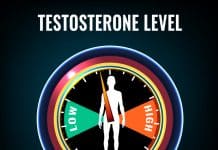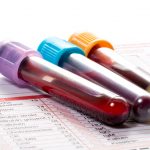I get a lot of emails from men on testosterone replacement therapy (and/or HCG) that feel they have water retention (some with ankle swelling) and they are puzzled that their estradiol is low or below 35 micrograms/ml. They may have tried anastrozole treatment without any success in decreasing water retention.This study was pointed out by a previous article written by Patrick Arnold.
“There is an enzyme that is localized primarily in the kidneys whose function is to protect the kidneys from circulating cortisol. The kidneys have receptors called mineralcorticoid receptors (MR’s) which are meant to bind to specific adrenal hormones (called mineralcorticoids) in the body such as aldosterone. The result of this binding is a signal to increase sodium and water retention in the body, while stimulating the excretion of potassium. This is an important mechanism to maintain fluid and electrolyte balance in the body.
A problem exists though in that cortisol can also bind activate these receptors. Cortisol is a widely circulating hormone and serves a multitude of functions throughout the body. However its intended biological functions do not include mineralcorticoid action in the kidneys, so to prevent this from happening the kidneys are rich in the enzyme 11b-hydroxysteroid dehydrogenase 2 (11b-HSD2). This enzyme deactivates cortisol by converting it into cortisone before it can bind to the renal MRs.”

Testosterone and anabolic steroids have been shown to inhibit 11b-HSD2.
Here’s how it works: throughout the course of the day, the adrenal gland releases the hormone cortisol, either due to normal circadian (daily) and ultradian (hourly) rhythms, or in reaction to stress. Cortisol is an important stress hormone, but many of its effects, while good in a fight-or-flight scenario, are bad over time in terms of diabetes and obesity: cortisol increases glucose production and release in the liver; increases appetite in anticipation of any necessary reaction to the stress-causing situation; and alters metabolic processing such that fat is preferentially stored in the central abdominal region. So, for diabetics, this means stored glucose directly increases blood sugar, new calories are ingested and increase both blood sugar and weight, and, to top it all off, the new weight tends to be the “bad,” visceral, disease-causing weight.
There are a couple of therapeutically important pit-stops for cortisol throughout this process, though; the active hormone cortisol can be converted in the kidney, colon, and some other tissues into the inactive molecule cortisone. The enzyme 11β-HSD2 aids this conversion, and allows cortisol to be stored out of the bloodstream.
Inhibiting 11b-HSD 2 can cause glucocorticoid-mediated MR activation, potassium excretion, sodium and water retention, and increased blood pressure.
Full Paper: https://toxsci.oxfordjournals.org/content/126/2/353.long

















Nelson, this situation describes me. I never had issues with water retention before starting TRT and I’ve struggled tremendously with it. Using AIs does not seem to work, and I feel awful on Arimidex. If I seem to have issues with this, what’s the best course of action? Any way to manage cortisol? Would appreciate any thoughts, guidance, etc you might have.
Here are some good suggestions:
https://www.google.com/search?q=water+retention+excelmale.com+site:www.excelmale.com&sa=X&ved=2ahUKEwi_k6DO4LThAhVFaq0KHU7vD2EQrQIoBDAAegQIBBAM&biw=1795&bih=870